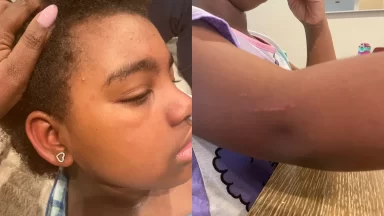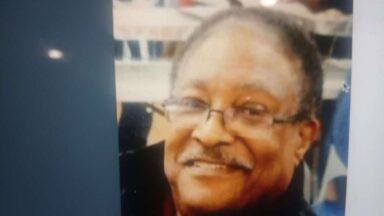Viviane Faver
Many stars shine bright in the Big Apple, including an artist who creates beauty and sanctuary through knitting, a photographer-historian with a distinctive lens on local life, a television network executive turned founder of a convention that champions black creatives, an entrepreneur dedicated to Black entrepreneurship and economic empowerment, and a Brooklyn couple who document Black stories and cultivate collaborative spaces.

Although they have taken different paths, they all share a common goal: to continue building and giving back to the city and communities that inspire their work.
Imani Ellis, Founder of CultureCon and the Creative Collective NYC, grew a potluck dinner into a thriving community of Black professionals. Originally from Atlanta, Ellis now lives in Harlem and has always wanted to create a true impact in the community. Her aim is to create spaces where diverse creatives and young professionals can feel seen and get the resources they need to turn dreams into reality.
Ellis never imagined that a potluck in her living room would grow into a company, movement, and community of over 100,000 diverse creatives and young professionals in just a few years. She credits her faith, empathetic nature, robust support system, and work ethic.
“When I was 11, my mom brought me here as a birthday gift, and I just couldn’t believe this was an option of where you could live. I returned to Atlanta and said, ‘Oh, I have to live in New York City one day.’ Walking down 125th Street in Harlem. There’s [the former] Hotel Theresa, which during the 1940s, ’50s, and ’60s hosted a ton of prominent Black figures, including Malcolm X, Muhammed Ali, and Josephine Baker. Then you’re standing right in front of the Apollo Theater. One of the reasons that are so impactful to me is it’s a living testament of all the great and rich history of Harlem specifically, and that there are still so many visual signs of those who came before us.”
Ellis sees innovation, creativity, and collaboration in the Black community in NYC. “It’s an ever-evolving ecosystem, and people are always coming from new places, joining the community, and building together. And that’s what keeps it alive and healthy. You can go to an art exhibit or a day party, and there are so many different versions of what extraordinary looks like, and it really boils down to artistic expression and individuality. I want my legacy to be that I was in service of my community and constantly driven to create spaces where they felt seen. I want my legacy to be that I was brave enough to listen to the small voice inside that said, ‘If it seems too hard today, let’s try again tomorrow.’”

Cynthia Gordy Giwa and Tayo Giwa, the couple behind the publication Black-Owned Brooklyn, find inspiration in their Bed-Stuy community—and each other. Cynthia, a former journalist, and Tayo, a photographer and lawyer, created a publication that makes it easier to discover local Black-owned businesses and document Black life, past and present, in the borough. They seek to lift up and preserve rich stories often erased in gentrified Brooklyn and encourage people to learn more about — and participate in — the creativity, joy, and self-determination throughout their community.
Cynthia is originally from Philadelphia, and what she loves about Brooklyn is that it feels like home. Tayo moved to Morningside Heights for law school but once he graduated, he moved to Brooklyn because he felt he belonged there. “I think about the diversity, from Caribbean people to African Americans who came with the Great Migration to Africans who immigrated to America. Afro-Latinos are also heavily present. I think that there’s something distinct, too, about that in Central Brooklyn. We all live together, and everyone has these inter looping connections. That diversity in the Black experience is not necessarily common in other cities across the country or the world.”
According to Cynthia, in their work, they talk a lot about self-determination and self-identity, which she sees a lot of that in the Black community in Brooklyn. “This strong sense of self-possession, pride, and confidence exists. So much of the conversation about Black Brooklyn tends to be about loss, pushout, and shrinking numbers. The Black Brooklyn we experience daily is so vibrant and present, immediate and dynamic. Not to say that displacement and gentrification don’t go with all that, but that is not the only story.
Their plans for the future are continually telling stories of their community on Black-Owned Brooklyn, making films, and doing intergenerational community events, relevant ways to bring people together that are different and unexpected.
“We want to work toward being public historians, and to tell stories about our community with reverence, and to tell those stories and pay attention to those things that may be overlooked, to make sure that we’re lifting up our people in a way that gives pride and inspires them.”

Brandi Cheyenne Harper is an Interdisciplinary artist and knitting guide. She wrote a book called Knitting for Radical Self-Care: A Modern Guide. It celebrates the work and life of revolutionary women of color who’ve impacted her creative career and inspired her to be a bigger and better version of herself, not live in fear, and embrace joy in all its forms.
Though she has been creating since an early age, when she made construction-paper murals on the walls of her childhood home, Brandi Cheyenne Harper probably didn’t imagine that knitting, a craft she taught herself at 15, would eventually enable her to make a living, create regenerative spaces for Black people and establish a considerable social media presence and devoted following.
Harper credits the support of her mother, her partner, and her circle of friends with helping her fashion life and career inspired by joy, creation, and community.
“I was born in Miami, but my parents came here when I was a year old. I grew up in Harlem, and then we moved to Brooklyn. My family and my friends keep me here. The community keeps me here. When you walk on Church Avenue, down Flatbush, you’ll get some of the best food you’ve ever had in your life, and it won’t cost you an arm and a leg. You can get some excellent homegrown food. Well-seasoned food. My whole life is pursuing joy, feeling good, and eating delicious food cooked by Black people. It’s literally the epicenter of my entire life.”
Her plans are to write more books that talk about knitting as a form of rest and also as a form of proof of our capacity. Create relaxing and rejuvenating regenerative space knitting circles that center around and support Black people, using knitting as the medium. “I’m working on this to make knitting accessible, not only materials but time and resources to gather to make things. Knitting specifically as an act of meditation and joy creation—that’s what’s next for me.”
A lover of New York City and history, Sola Olosunde is known for his online presence, particularly on Twitter and Instagram, where he showcases a portfolio and archive of vintage and vintage-style photography on his page Black New Yorker.
The photos depict life in—and the people of—the City that he takes a lot of pride in being from. Though he is also heavily influenced by the Nigerian culture of his family and Black culture as a whole, his words and the love, time, and skill evident in his work make it clear that Sola is a New Yorker through and through.
“When I was younger, I used to deliver stuff. When I would deliver food, I would go up to the rooftop just to see what it would look like. I always think about how fun that was to me, just seeing the City from many different perspectives. I was doing that for a lot of my teenage years. That’s my favorite New York experience because that wouldn’t happen anywhere else.
His inspiration for Black New Yorker comes from music like hip-hop, but he’s been thinking a lot about the fact that Marcus Garvey came here from Jamaica, and he brought this whole idea of Pan-Africanism.
“We share similar experiences, Black people, which is so important. People overlook this because Marcus Garvey isn’t talked about as much as other Black historical figures. You can say that here is where the idea of Pan-Africanism in America developed, and that’s probably one of the most significant contributions to the world that Black people have given in terms of New York.”
One of Sola Olosunde’s most significant accomplishments is teaching people about New York City and the fact that people will come up to him in the street about something he posted.

“When I first started college, I wanted to be a history professor to get people interested in history. So even if I didn’t end up in a classroom, it’s still like I taught people about New York City history and made them interested. I accomplished my goal. It may not look how I wanted it to look when I was 16, but I did it.”
Sola Olosunde likes to be known as someone who’s given a lot to his City and has influenced people to get educated and give back to their community in the best way they know how.
Jeff Lindor, Founder and CEO of Gentlemen’s Factory, built his career across several industries, including public policy and city government. Still, none has had more personal significance than what he’s been able to accomplish and build in six years of the Gentlemen’s Factory as his primary professional focus. According to the mission statement, the collective is “not a social club,” but a movement—a business incubator connecting entrepreneurially minded Black and Brown men.
“We have the Skills Factory, the workforce development and employment pipeline, where we’re helping to employ and train Black men and women across New York City and beyond. We will eventually launch the women’s equivalent of Gentlemen’s Factory, and we’re working with women-led organizations, women executives, and thought leaders on how to approach that. So this massive ecosystem addresses the different areas within our community that need to be strengthened.”
Though this multi-million-dollar revenue generator has already achieved extraordinary growth and had an immense social impact, the company and its founder are, according to Jeff’s vision and plans, just getting started.
“I was born in Haiti, and I came to New York at the age of 3 with my parents, who brought me here with my two sisters for a better life. What keeps me here is this is a city of opportunity, and this is a global city, so if you build effectively here, then you can scale whatever model you create all across the world. I think that the Black community in NYC is a really strong voter and economic base. I just walk around the City all day and study human interaction in different neighborhoods, and I also love the different architecture. That excites me. Just looking at this city’s diversity, brilliance, and beauty.”
He ends by adding he wishes to accomplish his mission in life to put his community in a better position than they were and that he could focus more on the collective element of the Black experience while not sacrificing his mental health or sacrificing his family— “that I lived a really balanced life.”



Recent Comments